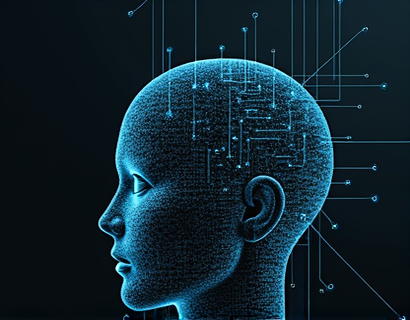Transforming Healthcare Communication: The Impact of AI-Driven Chat Interfaces in Intensive Care Units
The integration of artificial intelligence in healthcare, particularly within Intensive Care Units (ICUs), represents a significant leap forward in patient care and operational efficiency. An AI-driven chat interface is revolutionizing how stakeholders access and interact with critical information in real-time, thereby enhancing communication and decision-making processes. This technology empowers patients, caregivers, and healthcare professionals with immediate insights into ICU services, patient conditions, and industry best practices, ultimately leading to improved outcomes in critical care settings.
Enhancing Patient and Caregiver Communication
The primary goal of implementing an AI-driven chat interface in healthcare environments is to streamline communication between patients, their caregivers, and the medical team. By providing a user-friendly platform, this technology ensures that vital information is accessible at any time, reducing the likelihood of miscommunication and delays in care. For patients and caregivers, having real-time access to ICU details such as current vital signs, treatment plans, and potential risks can alleviate anxiety and foster a sense of involvement in the care process.
Moreover, this communication enhancement extends to educating patients and their families about their condition and the ICU environment. The chat interface can offer explanations of medical procedures, potential complications, and recovery processes in layman's terms, promoting better understanding and cooperation. This educational aspect is crucial in empowering patients and their families to make informed decisions regarding their health and treatment options.
Real-Time Insights for Healthcare Professionals
For healthcare professionals, particularly those working in ICUs, the AI-driven chat interface serves as an indispensable tool for staying updated on patient statuses and making timely decisions. The interface aggregates data from various sources, including patient monitors, electronic health records, and medical literature, providing a comprehensive view of each patient's condition. This real-time data access enables doctors and nurses to monitor changes instantly and adjust treatment plans accordingly.
Furthermore, the chat interface can analyze trends and predict potential issues before they become critical, allowing for proactive rather than reactive care. For instance, by monitoring vital signs and lab results, the AI can alert medical staff to signs of deterioration, enabling prompt intervention. This capability not only improves patient outcomes but also optimizes resource allocation within the ICU, ensuring that the most critical cases receive immediate attention.
Knowledge Management and Industry Insights
Beyond immediate patient care, the AI-driven chat interface plays a vital role in knowledge management within the healthcare industry. It serves as a repository of industry insights, clinical guidelines, and research findings, accessible to all stakeholders. This resource is particularly valuable for healthcare administrators and educators who need to stay abreast of the latest developments in ICU care and technology.
The chat interface can curate and summarize complex medical literature, making it easier for professionals to stay informed without the need to sift through extensive research papers. Additionally, it can facilitate the sharing of best practices and case studies across different institutions, promoting a culture of continuous improvement and innovation in critical care.
Improving Operational Efficiency
The implementation of an AI-driven chat interface in ICUs also contributes to operational efficiency. By automating routine inquiries and providing instant answers, the system reduces the workload on medical staff, allowing them to focus more on patient care. This efficiency gain is particularly significant in high-stress environments like ICUs, where every minute counts.
Moreover, the chat interface can integrate with existing hospital information systems, ensuring seamless data flow and reducing the risk of errors associated with manual data entry. This integration enhances the overall coordination of care, from admission to discharge, and supports smoother transitions between different departments and care levels.
Enhancing Security and Privacy
In the realm of healthcare, security and privacy are paramount concerns. The AI-driven chat interface is designed with robust security measures to protect sensitive patient information. Data encryption, access controls, and compliance with regulations such as HIPAA ensure that patient data remains confidential and secure. This commitment to security builds trust among users and safeguards against potential breaches that could compromise patient privacy.
Furthermore, the chat interface can monitor and log access to sensitive information, providing an audit trail that helps in identifying and addressing any security vulnerabilities. This proactive approach to security not only protects patient data but also meets the stringent requirements of healthcare regulations.
Case Studies and Real-World Applications
Several healthcare institutions have already implemented AI-driven chat interfaces with notable success. In one hospital, the chat interface reduced the average time to respond to critical alerts by 30%, leading to faster interventions and better patient outcomes. Another facility reported a significant decrease in patient readmission rates, attributed to the enhanced communication and education provided through the chat system.
In a tertiary care center, the chat interface facilitated real-time collaboration among multidisciplinary teams, improving the coordination of complex cases. This collaboration resulted in more consistent and high-quality care, as well as reduced variability in treatment approaches. These case studies demonstrate the tangible benefits of integrating AI-driven chat interfaces in ICU settings.
Future Prospects and Challenges
As AI technology continues to evolve, the potential applications of chat interfaces in healthcare are vast. Future developments may include more advanced natural language processing capabilities, enabling more intuitive and human-like interactions. Additionally, the integration of machine learning algorithms could enhance the system's ability to predict patient outcomes and personalize care plans based on individual patient data.
However, the adoption of such technology also presents challenges. Ensuring user acceptance and trust is crucial, as resistance from medical staff can hinder the system's effectiveness. Comprehensive training and support programs are necessary to facilitate a smooth transition and maximize the benefits of the chat interface. Moreover, continuous monitoring and updating of the system are essential to address emerging issues and incorporate new medical knowledge.
Conclusion
The introduction of AI-driven chat interfaces in ICUs marks a transformative shift in healthcare communication and decision-making. By providing real-time insights, enhancing patient and caregiver communication, and improving operational efficiency, this technology has the potential to significantly enhance the quality of care in critical settings. As the healthcare industry continues to embrace digital innovations, the role of AI in supporting and empowering healthcare stakeholders will only become more prominent.










































